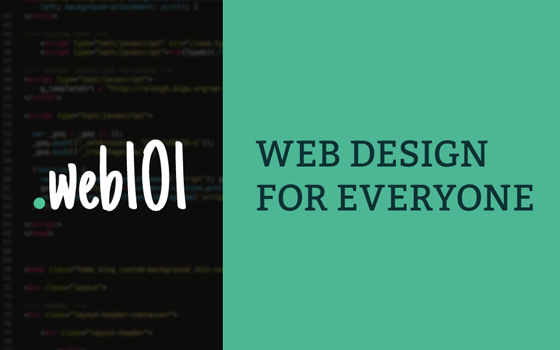It helps to get offline sometimes.
Offline thinking has been a theme I can trace back through just about everything I’ve written on this blog and elsewhere over the years, from the future of the web to the post-screen web to the web of tomorrow to offline thinking for screen workers to offline information architecture planning to my recent PRINT Magazine columns, Smarter, Better Cyborgs and Future Daydream.
This list is just what I can remember off the top of my head right now (and find using our handy search tool), but I’m sure the ideas of offline thinking and post-screen thinking come up again and again in other posts of mine and other Newfangleders, not to mention in plenty that I’m reading. Probably because it’s important.
Anyway, I think it’s a good idea to get out from in front of the screen now and then. Here’s a bit of what I wrote for ImPrint a while back about it:
“Design is broader than craft; it is another way (among many) of making sense of the world. That’s why a designer can be capable of doing great work in a variety of contexts, or of sustaining a rich career within a very narrow positioning. But in either extreme, a designer’s influences must be diverse. When I was a student in art school, I had a professor who once said that in order to make a great drawing, one also had to make paintings, sculpture, photography, film, textiles, architecture, jewelry, poetry, music, food, and anything else that could broaden the palette of the mind. I never got the chance to ask him if he was a James Burke fan, but regardless, he was more than on to something. His prescription was certainly ambitious; it almost mocked the all-too-real limits in ability and stamina we all face. But, we can start small.”
So here are just a few ways that you can do some offline thinking of your own. I’ll start with ways that are probably more practical and then make my way down the list to things that might be somewhat less practical but, for me, still pretty darn important to how I do what I do.
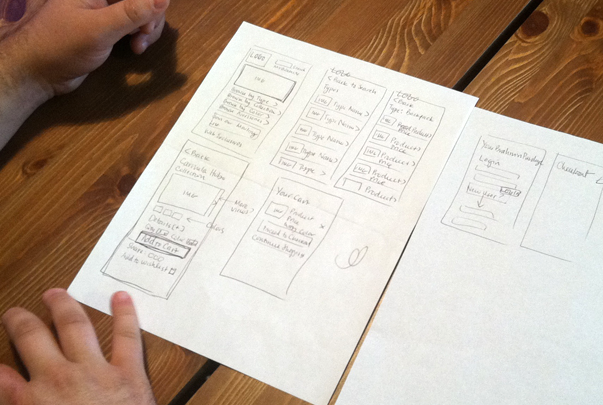
Building interactive prototypes is an essential part of our process, to be sure. But we also do a lot of paper prototyping before we start messing around with any code. Not every time, but often. This is Dave brainstorming on some mobile e-commerce interface options.
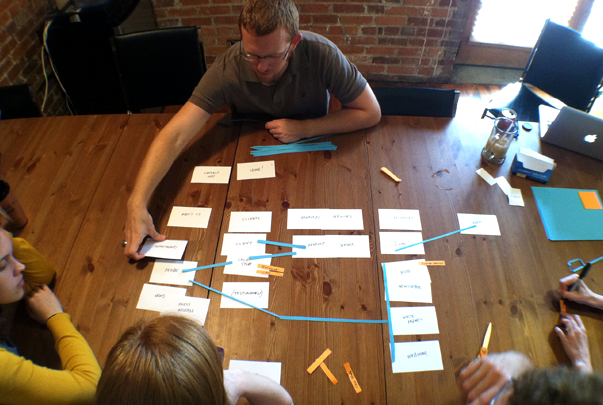
Last summer I blogged about doing offline information architecture planning. We don’t do this as a regular practice, but it was a great exercise to help us take a big step back and think through some of the things we might take for granted in terms of what works and what doesn’t.
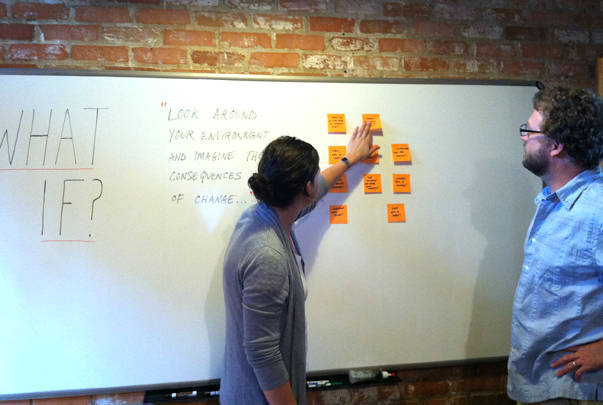
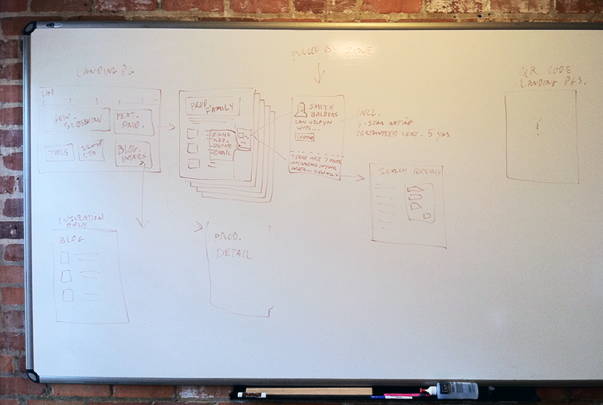
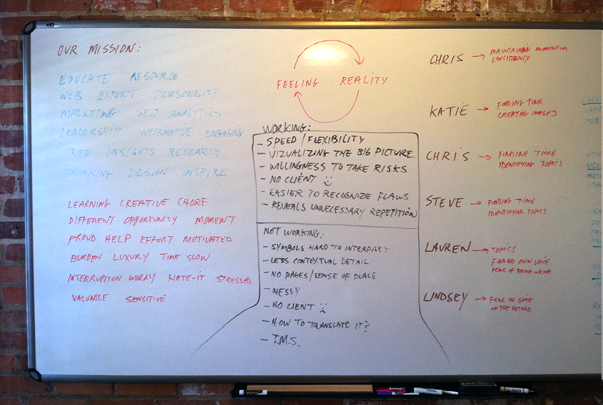
Whiteboarding. Obviously. These are just three of the many, many pictures I’ve taken of our conference room whiteboard which gets lots of use. We use it for internal enrichment sessions, functionality planning (just like paper prototypes, as well as group brainstorming and planning. It helps that it’s as big as it is, by the way. Being at that scale lets you not be too fussy about how things look as well as feel as if you are “in” the information.
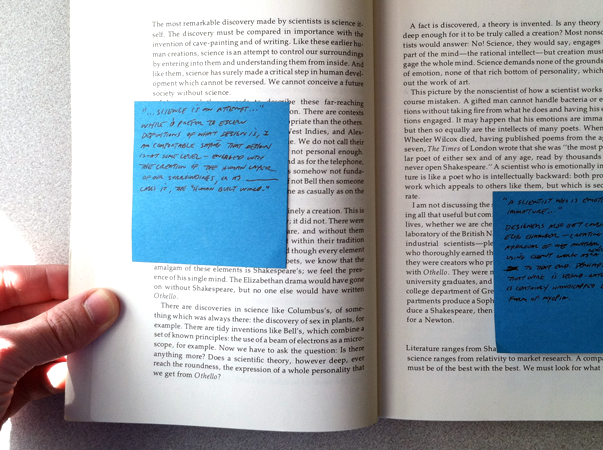
I still read books in their old-fashioned, deadtree format! But when I come across a passage I think is important or might want to reference later, I’ll get all futurey and take a picture of the page with my iPhone, which eventually makes its way to my Evernote account. It doesn’t work every time, but ideally, the text then becomes searchable later. But sometimes my ideas can’t wait for all of that, so I’ll go back to old-fashioned and stick post-its right on the page. I just did this for an article I’m writing for HOW.
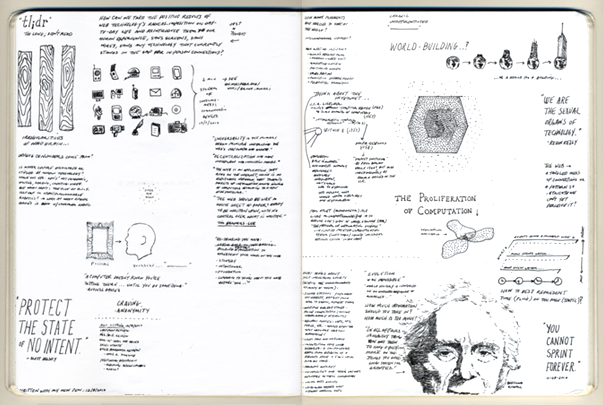
I keep a notebook handy where I jot down just about anything that interests me. Not everything—sometimes it’s just not as convenient as using my iPhone, laptop, or a post-it—and not just work stuff. I occasionally post pages from it here.
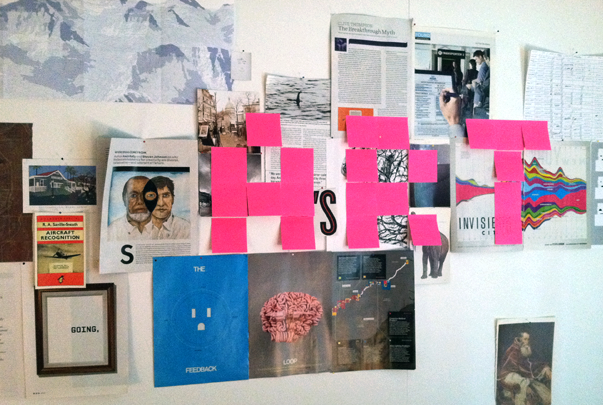
Finally, this is one of the walls of my home office. I like to continually change what’s tacked up there—it doesn’t even look like this anymore—so that my surroundings keep me inspired. There’s a texture to it. Bright colors, text, strange images, etc. It’s all representative of things I’m thinking about and things I want to be thinking about.
It’s not about being anti-screen. It’s about recognizing that some of the great things we’ve done on the screen have been because we were inspired by something off of it. Our experiences in the world aren’t just fodder for future screen material, though. They are much deeper than that. They build a worldview, a sense for what reality is, which is what contains every point of reference to the things we create. If we spend too much time in the “screen world,” then the feedback loop from source to creation will quickly run out of original material. It’s as if you were to make copies of an image from a copy, rather than the original. Eventually, the image would degrade so badly as to be unrecognizable. Given enough time, it would disappear entirely. Ideas have entropy too.
So, are you a screen worker? If so, what ways do you practice offline thinking?


